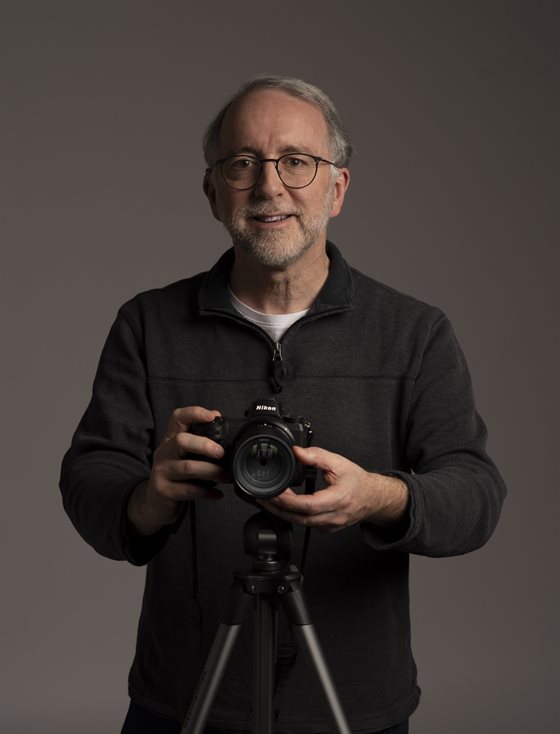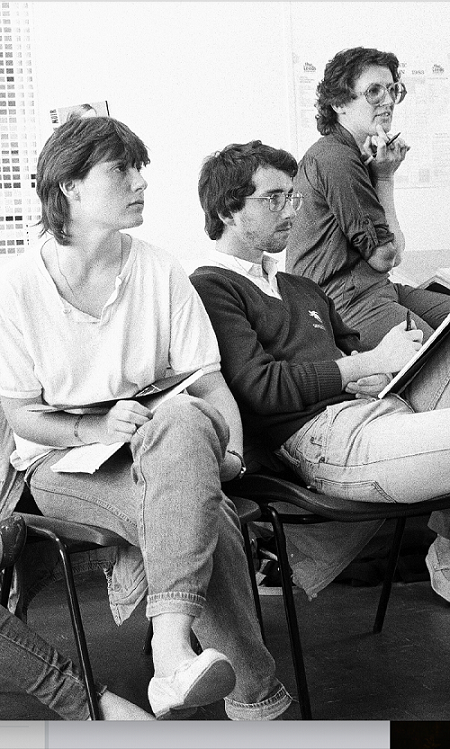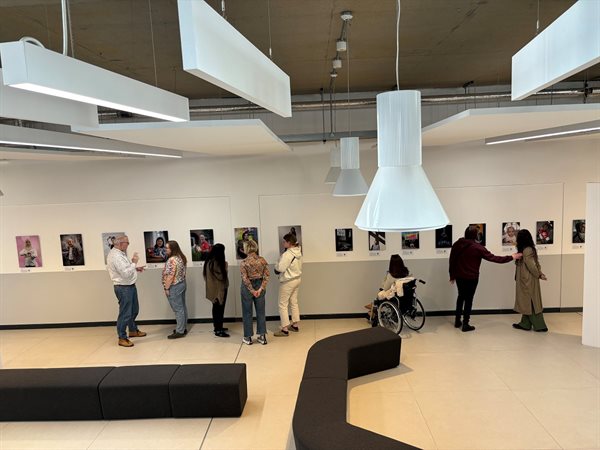Stephen Iliffe enrolled at De Montfort University Leicester (DMU) – Leicester Polytechnic at the time – in 1981 to study Photography and Graphic Design. Forty years after graduating and as an award-winning photographer, Stephen has just showcased his latest exhibition, Deaf Mosaic, at DMU.

Stephen is one of the approximately 900,000 people in the UK who are severely or profoundly deaf. After a tough childhood during which he was bullied for his clunky hearing aid, Stephen discovered the deaf community in his 20s, and decided he wanted to champion people just like him.
Using his photography, Stephen showcase how people have embraced deafness and gone on to live extraordinary and fulfilled lives. Deaf Mosaic is a celebration of everyday people from all walks of life who share one thing in common: a positive deaf identity that goes beyond negative ideas about ‘hearing loss’.
In Deaf Mosaic, kickboxers share the wall with the likes of CEOs, travellers, athletes, religious figures and children, all from different ethnicities and backgrounds with each portrait giving a glimpse into their lives.
Back to where it all started
Deaf Mosaic was on display in the Vijay Patel Building at DMU throughout April 2024. Like many alumni before and after him, Stephen learned his trade in the Fletcher Building, which was demolished to make way for the Vijay Patel Building in 2015.

Going back to exhibit his work in the same space where it all began 40 years ago was a “lifelong dream” for Stephen.
“I actually studied in the spot where the exhibition was hosted,” he said. “It’s amazing to see how much it has transformed.”
Stephen came to Leicester Polytechnic in 1981 to explore his passion for design. Inspired by the art design group Hipgnosis, whose notable designs include Pink Floyd's Dark Side of the Moon and Led Zeppelin’s Houses of the Holy, Stephen became captivated by the power of visuals.
“Hipgnosis used photography in an incredibly creative kind of way to make it look like art and it really resonated with me. In those days, Leicester Polytechnic was one of two places that offered both photography and graphic design as a combination; teachers recommended it and I was local, so it naturally drew me in.
“It was a really good course as well. Peter Rea, who was the course leader and sadly not with us anymore, told me that you’re not just learning a trade but you’re getting an education for life.
“I muddled through, my lecturers were very understanding and took time to explain things one-on-one or would give me lecture notes. I made friends. It was a great choice to go through DMU.”
A career supporting deaf people
Stephen left Leicester Polytechnic with practical skills, friends and increased confidence. However, the joy of graduating soon turned into frustration, as his deafness became a barrier to the job market.
After countless applications and speculative cold calls with no results, Stephen became disillusioned and put down his camera, eventually finding a career in charity work.
Stephen says, “Now, if you’re deaf and you have a job, you can apply to the government you can get Access to Work and it gives you financial aid for equipment or interpreters. That’s how a lot of deaf people access jobs.
“Back in 1984, there was none of that around. I couldn’t see a way forward with photography, so I moved to London and started becoming more involved with the deaf community.”
“I started to meet more deaf people and there was more political awareness that our community had a human right to access equality and support.”
Stephen would go on to find himself at the frontline of the battle for greater equality, securing a role in the Royal National Institute for Deaf People (RNID), and lobbying politicians and organisations to support greater accessibility for deaf people.
Stephen worked his way up to become the organisation’s Deputy Director of Communications before leaving to work for the National Deaf Children’s Society.
Getting back behind the lens
After a 28-year career, he made the difficult decision to leave the comfort of a well-paid job and return to his first love: photography.
“I took a gamble,” Stephen says. Despite feeling unsure of his decision, Stephen would go on to gain acclaim for his emotionally-charged portrait of six-year-old deaf child asylum-seeker, Lawand Hamadamin.
Stephen’s photo of Lawand scaling the wall of his temporary accommodation would be nominated for the prestigious Portrait of Britain 2018 from the British Journal of Photography. Later, it was exhibited at the world-famous National Portrait Gallery.
It wasn’t until the pandemic that freelancing really clicked into place for Stephen.
He says: “I had spent some time in Leicester taking photos of the Asian communities around Melton Road when I realised that my project would only work if I got into the community – into their homes and businesses. I didn't really know many people and felt like an outsider looking in.
“The pandemic made me reassess and that was my eureka moment - I’m part of the deaf community, why am I not photographing them?
“Deaf people from different backgrounds, celebrating different achievements was my aim.”

Among Stephen’s portraits in Deaf Mosaic is Asha Hylton, a team leader in a critical care team at Kings College London. Stephen says, “Asha’s severely deaf but in a position of enormous responsibility, working with very ill children.”
“Deafness is not a disability, it’s the environment and as long as you adapt that environment, deaf people can do anything. Asha is a great example of that.
“Deaf Mosaic affirms that, with the right support, deaf people can achieve anything.”
For more information about Stephen and Deaf Mosaic, visit www.deaf-mosaic.com or read this article.
Posted on Thursday 2 May 2024